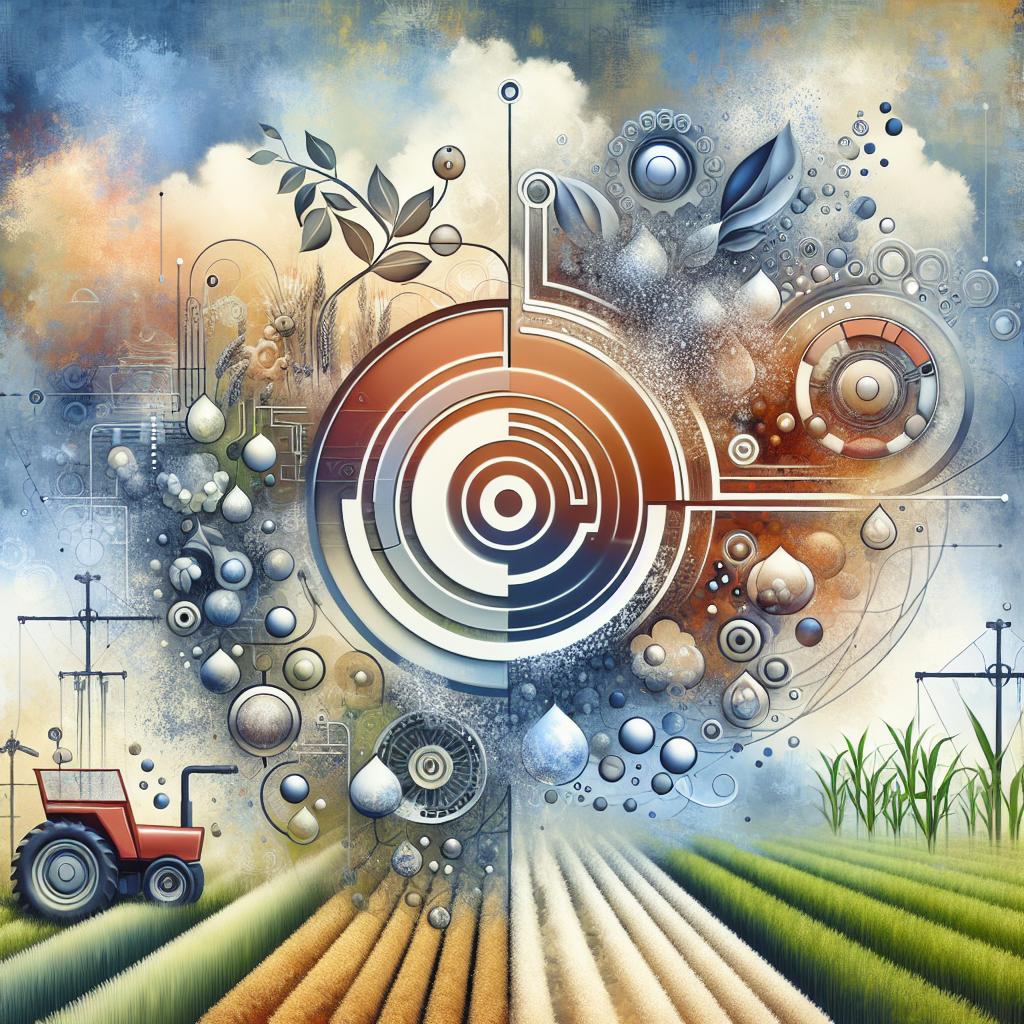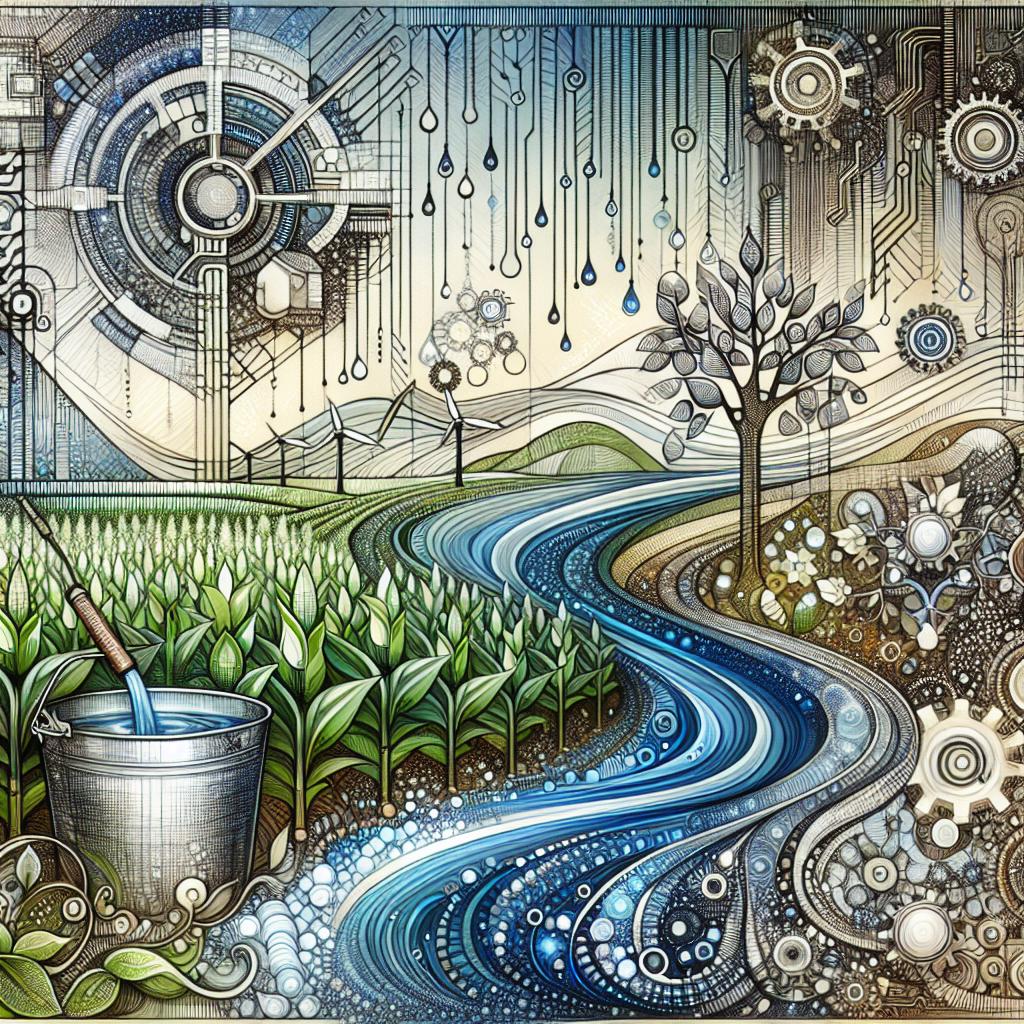This post may contain affiliate links which means I may receive a commission for purchases made through links. Learn more on my Private Policy page.
Integrating Fertilizer Submission with Your Irrigation System: A Match Made in Growth Heaven
Imagine strolling through lush rows of verdant crops, the air fragrant with the promise of harvest. Now, picture your irrigation system transforming from a simple delivery system for water into a powerhouse that nourishes your plants in more ways than one. Welcome to the world of advanced agriculture where the integration of fertilizer application with irrigation systems isn’t just a trend—it’s a game-changer! As we dive into this harmonious approach, we’ll explore how marrying these two vital processes can simplify your farming routine and lead to healthier plants, higher yields, and a more lasting future. Ready to unlock the full potential of your garden or farm? Let’s dig in!
Understanding the Synergy Between Fertilizer and Irrigation
Combining fertilizer application with irrigation is more than just a convenience; it’s a potent strategy for maximizing crop yields. When these two elements work in harmony, plants receive nutrients at the optimal time, ensuring they can absorb them efficiently. Key factors that influence this synergy include:
- Timing: Aligning irrigation with fertilizer application allows roots to draw in nutrients when they are most active.
- Application Method: Using techniques such as fertigation can deliver nutrients directly through the irrigation system, promoting better uptake.
- Water Quality: The type and quality of water used for irrigation can affect nutrient availability and absorption.
Understanding the relationship between these systems can also drive more sustainable practices.For example, the table below illustrates how different irrigation methods can influence nutrient efficiency:
| Irrigation Method | Nutrient Efficiency | Water Usage |
|---|---|---|
| Drip Irrigation | High | Low |
| sprinkler Irrigation | Moderate | Moderate |
| Surface Irrigation | Low | High |
By choosing the right method of irrigation for your fertilizer application, you can enhance nutrient absorption rates, reduce waste, and promote soil health—all essential components for thriving crops.

choosing the Right Fertilizer for Efficient Application
Choosing the right fertilizer is pivotal for maximizing the benefits of your irrigation system. To ensure efficient application, consider these vital factors:
- Nutrient Content: Different plants require varying nutrient ratios. Check the N-P-K (Nitrogen-Phosphorus-Potassium) values to match your soil needs.
- Granular vs. Liquid: Granular fertilizers release nutrients slowly and are often better suited for long-term feeding, while liquid fertilizers provide a quick nutrient boost, ideal for fast-growing plants.
- Soil pH: Testing your soil’s pH can guide you in selecting fertilizers that will complement existing soil conditions.
Once you have identified the appropriate fertilizer,integrating it with your irrigation system can lead to remarkable results. Here’s how to seamlessly blend these two elements:
- Fertigation Techniques: This is the process of delivering fertilizer through the irrigation system,ensuring even distribution and reducing waste.
- Compatibility: Always choose fertilizers that are compatible with your irrigation method—whether it’s drip, overhead, or surface irrigation.
- Application Rate: Adjust your fertilizer application rate based on the irrigation system to avoid over-fertilizing, which can harm plants and pollute water sources.

Optimizing Your Irrigation System for Fertilizer Integration
To effectively optimize your irrigation system for the integration of fertilizer, begin by assessing your current setup. It’s essential to evaluate the uniformity of water distribution, as variations can lead to uneven nutrient application. Consider the following steps:
- Check emitter and nozzle sizes for proper flow rates.
- Inspect for clogs or wear that could affect performance.
- Adjust scheduling to ensure timing aligns with both watering and fertilizing needs.
once you’ve ensured your system is in good working order, the next step is to select the right type of fertilizer for your crops and irrigation method. Utilize a fertigation strategy to deliver nutrients efficiently, allowing for precise control over application rates. Here’s a simple guide to help you choose the right fertilizer:
| Fertilizer Type | Best For | Application Method |
|---|---|---|
| granular | Heavy feeders | Pre-planting or side-dressing |
| liquid | Rapid nutrient uptake | Through irrigation system |
| slow-release | Long-term feeding | Pre-planting |

Best Practices for Monitoring and Adjusting Your setup
To ensure that your integrated fertilizer and irrigation system operates at peak efficiency, it is crucial to continuously monitor its performance. Start by establishing clear metrics that align with your crop goals, such as nutrient absorption rates and soil moisture levels. Utilize sensors and data analytics tools that provide real-time insights into both soil health and plant needs. Regularly check for discrepancies between your expected outcomes and actual results, allowing you to make informed adjustments before issues escalate. Consider the following factors to keep your system finely tuned:
- Irrigation Frequency: Adjust based on weather conditions and soil moisture measurements.
- Fertilizer Concentration: test soil nutrient levels periodically to optimize fertilizer application rates.
- Equipment Maintenance: Conduct regular inspections on your irrigation system to prevent clogs and ensure even distribution.
- Crop Monitoring: Observe plant growth patterns for signs of nutrient deficiencies or excesses and adapt your approach accordingly.
Another effective strategy is employing a systematic approach to adjusting your setup based on collected data. Create a flexible schedule that allows for rapid course corrections without compromising crop health. Implementing a feedback loop will enhance your system’s adaptability. Below is a simple decision matrix to help guide your adjustments:
| Condition | Action Required |
|---|---|
| Low Soil Moisture | Increase irrigation frequency |
| Nutrient Deficiency Detected | Adjust fertilizer application |
| Excess Water | Reduce irrigation intervals |
| Steady Growth | Maintain current settings |
Final Thoughts
As we wrap up our journey through the world of integrating fertilizer application with your irrigation system, let’s take a moment to appreciate the harmony that can be achieved in the garden. Picture your plants thriving, nourished by both water and nutrients delivered in one seamless flow. It’s not just about the science behind it; it’s about creating a symphony where every drop counts, helping your garden to flourish in the most efficient and sustainable way possible.
Remember, this integration is more than a task—it’s an art form. By synchronizing your irrigation and fertilization efforts, you’re giving your plants the best chance at vibrant growth while conserving resources and reducing waste. So, grab those hoses, fine-tune your systems, and watch as your garden thrives like never before!
We hope this guide has inspired you to take the leap into this innovative approach. Whether you’re a seasoned gardener or just starting your green thumb journey, the rewards are plentiful. Happy gardening, and may your plants bask in the abundance of the care you provide!
This post may contain affiliate links which means I may receive a commission for purchases made through links. Learn more on my Private Policy page.

